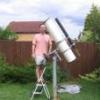
By
Orion
in General Astronomy Discussion
East Midlands Stargazers is a community of amateur astronomers. Although we're a local astronomy community with many members from Nottinghamshire, Derbyshire, Leicestershire and Lincolnshire, we're also blessed with an abundance of friendly and insightful members from much further afield.
We have placed cookies on your device to help make this website better. You can adjust your cookie settings, otherwise we'll assume you're okay to continue.
Recommended Posts
Create an account or sign in to comment
You need to be a member in order to leave a comment
Create an account
Sign up for a new account in our community. It's easy!
Register a new accountSign in
Already have an account? Sign in here.
Sign In Now